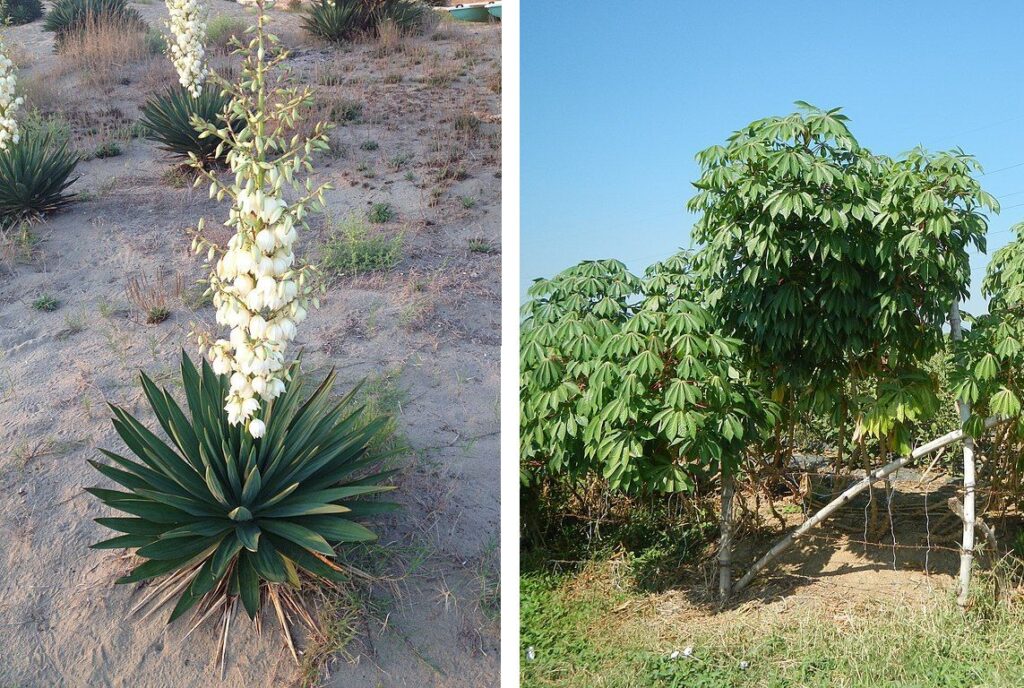
20 February 2023
In Ecuador I ate yuca, not yucca. The names sound the same and are nearly spelled the same but they are not the same plant at all.
Yuccas are members of the asparagus family (Asparagaceae) that grow in hot, dry places in the Americas and Caribbean. Ranging from ground-based rosettes of sword-shaped evergreen leaves to the Joshua tree (Yucca brevifolia) of the Mojave Desert only their flower petals are eaten and then only in Central America. The yucca’s main cultivated use is as an ornamental plant.
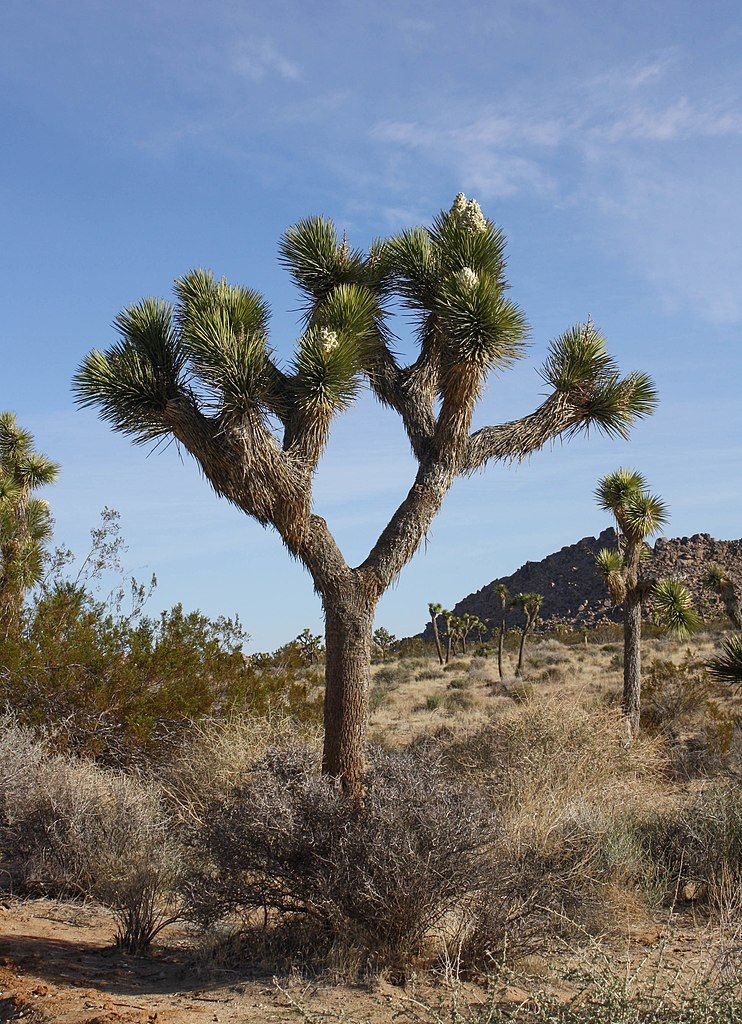
But back in the 1700s when Europeans were renaming everything they found in the Americas, “early reports of the [Yucca] species were confused with cassava (Manihot esculenta). Consequently, Linnaeus mistakenly derived the generic name for yucca from the Taíno word for the cassava, yuca.” — quoted from Wikipedia yucca account
It’s hard to imagine how the mix up occurred. Their leaves and growing patterns are not at all the same.
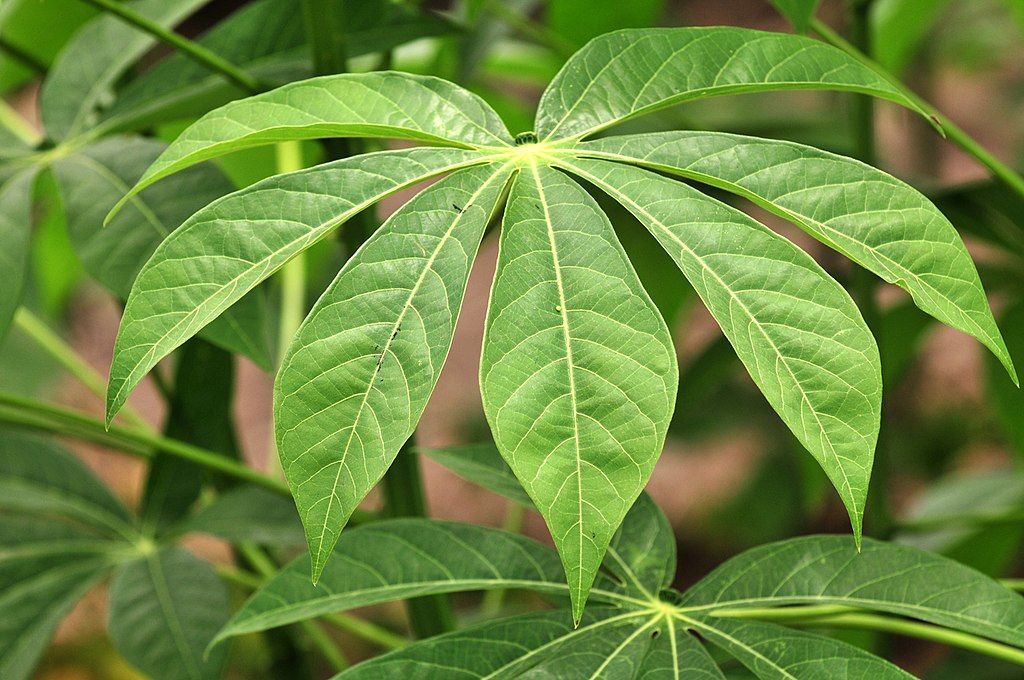
Yuca, also called cassava, manioc and Manihot esculenta, is a native woody shrub of South America whose tuberous roots are a food staple in the tropics around the world. Yuca was already a local mainstay food when Europeans arrived to analyze it. Today it is “a primary component of the diet of more than 800 million people around the world.”
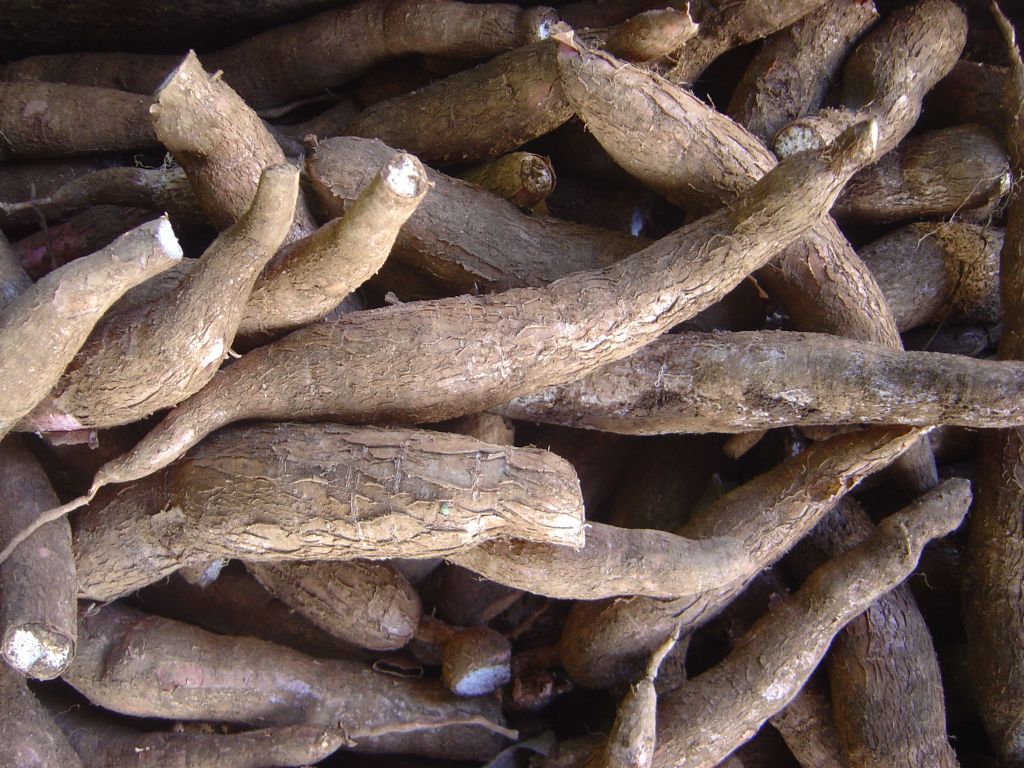
The taste ranges from sweet to bitter but the roots contain cyanide so they must be peeled, soaked and boiled or else cut or ground and sun-dried before eating.
After the root is prepared for eating it can be made into flour, tapioca, chips, noodles, fries etc. I ate fried yuca in Ecuador. It tastes like French fries.
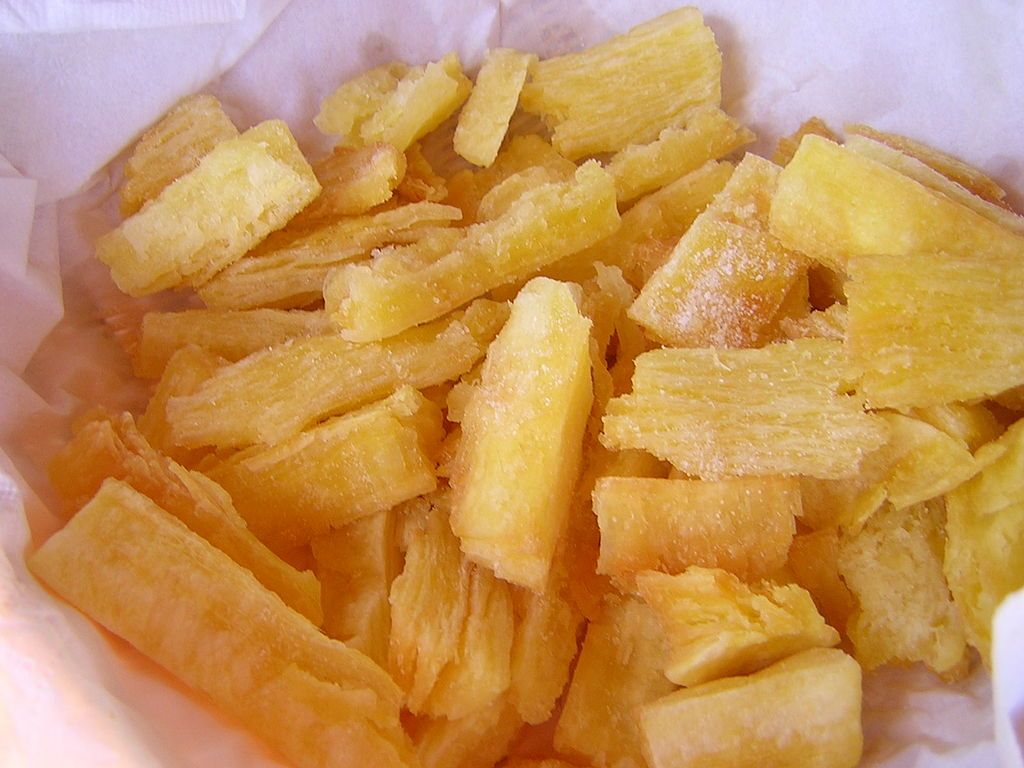
Mmmm good!
(photos from Wikimedia Commons; click on the captions to see the originals)